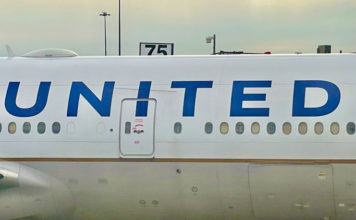
TravelingForMiles.com may receive commission from card issuers. Some or all of the card offers that appear on TravelingForMiles.com are from advertisers and may impact how and where card products appear on the site. TravelingForMiles.com does not include all card companies or all available card offers.
Some links to products and travel providers on this website will earn Traveling For Miles a commission that helps contribute to the running of the site. Traveling For Miles has partnered with CardRatings for our coverage of credit card products. Traveling For Miles and CardRatings may receive a commission from card issuers. Opinions, reviews, analyses & recommendations are the author’s alone and have not been reviewed, endorsed, or approved by any of these entities. For more details please see the disclosures found at the bottom of every page.
A few days ago, and for the first time in quite some time, one of the big credit card currencies launched a bonus offer on points transfers to an international airline loyalty program. I was surprised to see the offer appear because most of us still don’t have all that many destinations we’re allowed to fly to (at least not without having to go into quarantine upon our return) but it got me wondering about the merits of such transfers at a time like this.
The offer in question is a 25% bonus for transfers between Citi’s ThankYou program and Avianca’s Lifemiles. For the purposes of this post, however, that’s not very relevant. What’s more relevant is the question of how good an idea is it to transfer points from one of the big transferable currencies into an airline loyalty program at this moment in time?
My favorite currencies to earn are Amex Membership Rewards Points, Chase Ultimate Rewards Points, and Citi ThankYou Points (in that order of preference) as they give me a diverse range of options when it comes time for me to book travel. The problem with transferring any of these currencies into an airline loyalty program is that once you’ve enacted a transfer, the miles or points that you now have in the airline loyalty program are considerably less versatile and therefore a lot less useful. There’s no going back.
Under normal (non-Covid) circumstances there are usually at least two reasons why this reduced versatility isn’t a big issue:
- Someone making a transfer usually has a short-term plan for the airline currency they’re creating so they don’t need any more versatility – they have the currency they need to book the flights they want to book.
- Where a transfer is being done without an immediate plan in place for the airline currency being minted, the transfer is often made under the terms of a bonus promotion in which a better-than-normal transfer rate is being offered (like the Citi to LifeMiles bonus that’s currently active). This increased transfer rate makes up for the loss of versatility (at least in part).
Right now, however, we’re in unknown territory (and we’re certainly not operating under normal conditions) so that changes the game considerably. The risks that a person takes on by transferring points from one of the major credit card programs to an airline loyalty program are a lot higher than normal right now and these are risks that everyone should understand before they consider moving any points across.
The Risks
The golden rule for transferring points across to a specific loyalty program has remained the same for as long as I can remember: Don’t transfer points on a whim. Transfer only when you have a fixed plan and when you can see the awards that you want to book are available. Under normal conditions, following that advice should keep you safe, but as things stand that rule may not keep you safe enough.
Even if you can see that awards are available to be booked for the dates you’re prepared to fly, a lot can still go wrong between now and when you’re set to travel. Here are just a few examples:
- Your chosen airline may decide that the route you’ve booked is uneconomical and cut it from its schedule.
- Your destination may change its entry policy making it impossible for you to travel there.
- Your home country may change its rules about arrivals from your planned destination so, unless you’re comfortable self-isolating for up to 14 days when you return from your trip, you may have to cancel your plans.
- The airline through which you booked cannot continue to fund its operations and shuts down.
- A partner airline with which you’re set to fly cannot continue to fund its operations and shuts down.
Scenarios 4 and 5 are probably the least likely to occur as most airlines are getting state aid to one degree or another and should survive, but the potential issues mentioned in points 1 through 3 could very easily come into play the way things have been going. In all three of these cases a person’s miles/points would be returned, but they would now form a balance in an airline loyalty program that may not be of any immediate use.
With no immediate use for the miles/points that are now sitting in the airline program, all the issues that we try to avoid by sticking to the “don’t transfer points without a plan” rule come into play.
- The airline could devalue its program by increasing the cost of awards before you get a chance to use your balance
- The airline may end the partnership you were relying on to book the trip you wanted before you get a chance to use your balance
- The airline may change its rules surrounding award bookings and, by doing so, make your planned itinerary unbookable before you get a chance to use your balance.
All of these issues are around even when there isn’t a pandemic at the door, but there’s a far greater probability of one or more of these scenarios becoming a reality the way things are right now.
If you’re planning to transfer points to help you to book a trip within your own country the risks are clearly lower than they would be if you were planning an overseas trip…but the risks are still there. American Airlines canned flights to 15 US cities yesterday as it threw a tantrum over government funding and Delta has already made changes to its domestic schedule twice this week so there’s very little stability to rely on right now.
Sure, if you’re transferring points with a view to booking a flight in the very short term you’ll be opening yourself up to a lower level of risk than someone booking for the longer term…but you only have to look at how suddenly some governments are reacting to virus spikes overseas (e.g. the UK’s attitude to quarantine rules) to realize that even flights booked close-in aren’t risk-free.
Bottom Line
Personally speaking, as things stand I’m not prepared to part with my transferable currencies until the risks associated with a transfer have reduced from their current levels. Once the flight schedules settle down, the risk of border closures has diminished, and when it becomes clearer what the aviation world will look like when the smoke clears, I’ll start thinking about moving points around again. Until then I’ll continue to sit back and accumulate.
Others will have a different outlook and different risk profile to me and that may mean that they’re a lot more comfortable transferring points in situations when I am not. There’s nothing wrong with that (each to their own), but if you’re considering a transfer make sure you’re fully aware of the risks you may be facing. They’re a lot higher now than they have been in years.















![Deal: Save up to 20% on Air France/KLM bookings [Targeted] a row of seats in a plane](https://travelingformiles.com/wp-content/uploads/2024/03/air-france-new-business-class-5-741-80x60.jpg)


if anyone uses an airline card for miles today they are paying cash now for points to be used later – at least 2c each – once upon a time one could get value from this but no longer